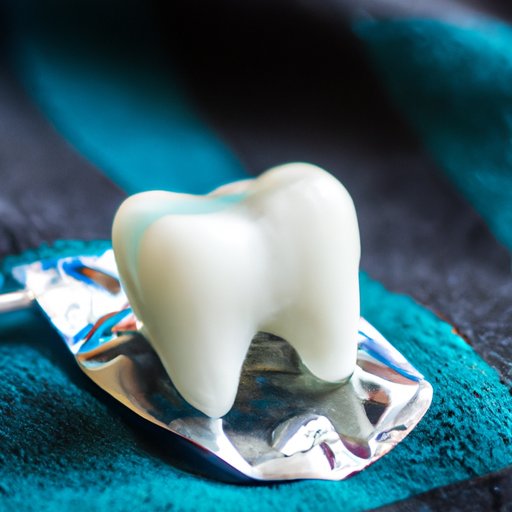I. Introduction
One of the most uncomfortable experiences after getting a tooth extracted is developing dry socket. This condition occurs when the blood clot that usually forms in the tooth socket after extraction either dissolves or never forms, leaving the bone exposed. This can lead to intense pain and even infection, making it important to treat dry socket as soon as possible.
II. Focus on the Symptoms
The most common symptoms of dry socket typically include intense pain, bad breath, and an unpleasant taste in the mouth. Some people may also experience swelling or visible bone in the affected area. It is important to see a dentist if these symptoms persist, as they may indicate the presence of dry socket.
III. Step-by-Step Guide
Once your dentist has confirmed that you have dry socket, they may begin a step-by-step process of cleaning and packing the socket. This typically involves:
- Flushing out the socket with saline solution or other antiseptic liquids
- Packing the socket with medicated gauze or other materials to protect the area
- Replacing the packing materials every day or as needed until the socket heals
It is important to follow your dentist’s instructions carefully during this process, as failure to do so may prolong your recovery time or cause other complications.
IV. Home Remedies
There are several home remedies that can help ease the pain associated with dry socket. Some of the most effective include:
- Applying a warm compress to the affected area for short intervals, taking breaks to prevent burns
- Using essential oils like clove or tea tree oil, which have anti-inflammatory and pain-relieving properties
- Gargling with saltwater or other antiseptic mouthwash to help alleviate pain and prevent infection
While these remedies can be helpful, it is important to consult with your dentist before trying any of them to ensure that they do not interfere with your treatment plan.
V. Medical Treatments
If your symptoms are particularly severe, your dentist may recommend prescription pain medication or other medical treatments to help alleviate pain and prevent infection. Some possible medical treatments for dry socket include:
- Prescription painkillers like opioids or NSAIDs
- Antibiotics to prevent or treat infection in the affected area
- Surgery to remove any debris or dead tissue in the socket
While these treatments can be effective, they may also come with side effects or risks. It is important to discuss the benefits and drawbacks of each option with your dentist before making a decision.
VI. Prevention Tips
While there is no guaranteed way to prevent dry socket, there are steps you can take to reduce your risk. These include:
- Avoiding smoking or tobacco use both before and after your dental procedure, as these substances can interfere with blood clotting and healing
- Familiarizing yourself with proper dental hygiene techniques to ensure that you are minimizing your risk of developing infections or other complications
- Taking care to follow your dentist’s instructions both before and after your procedure, including avoiding eating or drinking for a certain amount of time before the procedure and refraining from using straws or other suction devices for several days afterward
VII. Personal Stories
Many people have successfully treated dry socket and gone on to make a full recovery. Some strategies that have worked for others include:
- Staying on top of medication and following instructions carefully to avoid any complications or setbacks
- Using essential oils or warm compresses to help ease pain and inflammation
- Taking steps to reduce stress and stay calm during the recovery process
While everyone’s journey is different, the most important thing is to seek professional help if you are experiencing any symptoms of dry socket. With time and proper care, you can make a full recovery and avoid any long-term complications.
VIII. Conclusion
Treating dry socket can be a frustrating and painful experience, but with the right strategies and care, it is possible to make a full recovery. By following your dentist’s instructions, exploring home remedies, and considering medical treatments when necessary, you can take control of your dental health and minimize your risk of developing dry socket. Remember to prioritize your well-being and seek professional help if you are experiencing any pain or discomfort after a dental procedure.
